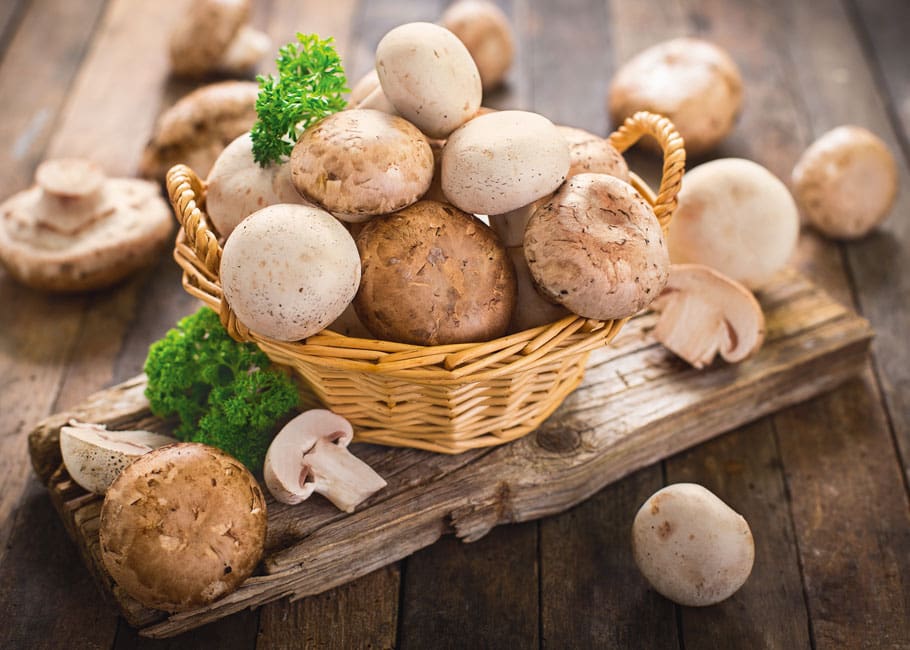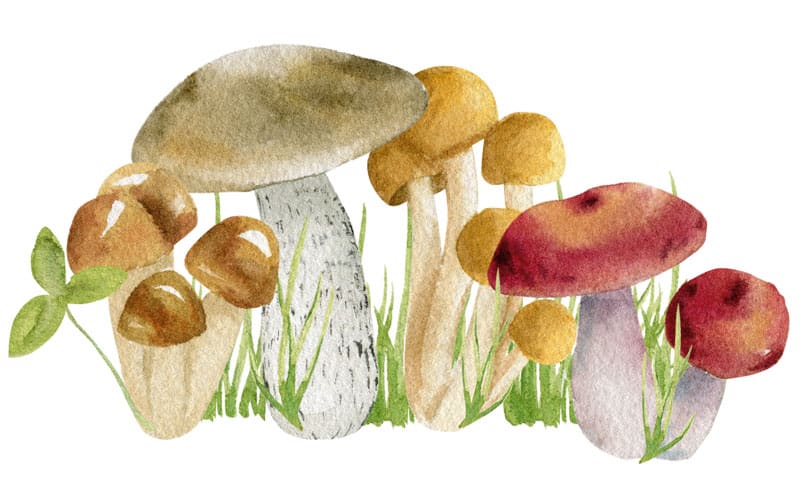
Fungus among us
Mushrooms have many benefits in addition to serving as a mealtime staple
Mushrooms are a nutritional powerhouse with health properties that have been proclaimed for centuries throughout the world.
Awareness of the culinary and health benefits of mushrooms can be traced as far back as 4,600 years ago in ancient Egypt. Egyptian hieroglyphics suggested that mushrooms were considered the plant of immortality exclusive to royalty. In the 17th century, the French cultivated them in dark caves around France. As mushrooms grew in popularity, English gardeners began experimenting with spawn (a substance inoculated with fungal vegetative growth— a “starter kit,” if you will). Finally, in the late 19th century, mushroom spawn from England was sold to growers in the eastern U.S., and mushrooms have graced North America’s plates ever since.
Varieties and culinary uses
The kingdom Fungi offers many mouth-watering mushroom varieties, including white, maitake, black oyster, king oyster, mini bella, shiitake, beech, enoki and portabella. White mushrooms represent the majority eaten in Canada.
“Mushrooms aren’t just a special topping; we consider them a staple that makes a meal better, any time of day, every day,” says Costco member Eric Davis, a spokesperson for the Mushroom Council. “With their brilliant flavour, multiple healthful benefits and diverse applications, mushrooms can be enjoyed as an appetizer, side dish or entree.”
[I] also love chopping up mushrooms and blending them with meat for juicier, more delicious burgers that also have less fat, sodium and cholesterol.”
Mushrooms as medicine
Today, the scientific community has taken notice of the health benefits of different mushrooms. Antioxidants and phytochemicals (health-promoting plant compounds) abound in mushrooms. Their antioxidant content equals or exceeds that in coloured fruits and veggies.
Harry Marsales, a researcher in the University at Buffalo’s Department of Exercise and Nutrition Sciences, says mushrooms may play a role in a wide variety of disease prevention, from boosting immune function due to their strong antioxidant capacities, to improving glucose tolerance due to their fibre levels and even suppressing the growth and reproduction of certain cancer cells.
Being rich in zinc and selenium, mushrooms can give your immune system a power-up, particularly during cold season. Dietitians Tamara Saslove and Elis Halenko note on Mushrooms.ca, “Especially during the wintertime in Canada, it’s important to eat foods like mushrooms that are rich in zinc and selenium, as these minerals have been proven to reduce symptoms and duration of the common cold.”
A 2021 review article in Food & Function researched 917 studies and the health benefits of fungal beta-glucans, a soluble fibre found in some mushrooms. The studies showed that the beta-glucans may strengthen “immune defense that reduces the incidence and symptoms of cold, flu and other respiratory infections” along with improving allergic symptoms.
A bevy of benefits
Cancer fungotherapy is an active field. According to a 2018 review in Oncotarget, many studies are researching the antibiotic and anti-tumour effects of anti-cancer therapies using mushrooms.
Other possible benefits include maintaining bone health, preventing heart disease and aiding weight management, because mushrooms are naturally low in calories and provide satiating proteins and fibre that help one feel full.
Marsales discovered that eating mushrooms with food has the ability to significantly lower glucose levels; his 2014 mushroom study further suggested that this effect may help those trying to lose weight. All mushrooms contain soluble fibre, specifically beta-glucan, which has been shown to improve glucose tolerance following a meal.
In addition to providing fibre, B vitamins, potassium, zinc and selenium, some varieties of mushrooms are the only source of vitamin D in the produce aisle.
Marsales says to get the most out of mushrooms, you should consume a variety of species. Get your mushroom on!
More on mushrooms
Here are a few tips to get more from your mushrooms:
● The mushroom’s cap veil hints at the flavour. A veil under the cap indicates a delicate flavour, while an open veil and exposed gills mean a richer flavour.
● When selecting mushrooms, choose those that are firm, plump and dry, but not dried out.
● Always store mushrooms in a porous paper bag or in a sealed container to prolong shelf life, and keep them in the refrigerator.
● Mushrooms should be rinsed, never soaked, to remove peat moss, and dried with a towel.
● Remove shiitakes’ stems before use.
● Never freeze raw mushrooms, but sautéed mushrooms may be frozen and kept for up to a month.
● Mushrooms can have even more vitamin D if grown in the sun.—SB

A typical serving size is five medium whites or mini bellas or five to seven shiitakes or an 85-gram (3-ounce) portabella cap.
It’s critical to highlight that not all mushrooms are edible; they can cause poisoning, infections, even death. Never eat wild mushrooms unless you’re an expert or trained mycologist.
The Mushroom Council says poisonous mushrooms often resemble non-poisonous varieties; they suggest purchasing mushrooms from trusted and retail sources.—SB
Costco Connection: Costco warehouses carry a variety of mushrooms throughout the year, such as black oyster, enoki, king oyster, maitake, mini bella, portabella, shiitake, white and a chef mix including white beech, brown beech, king oyster and shiitake.

